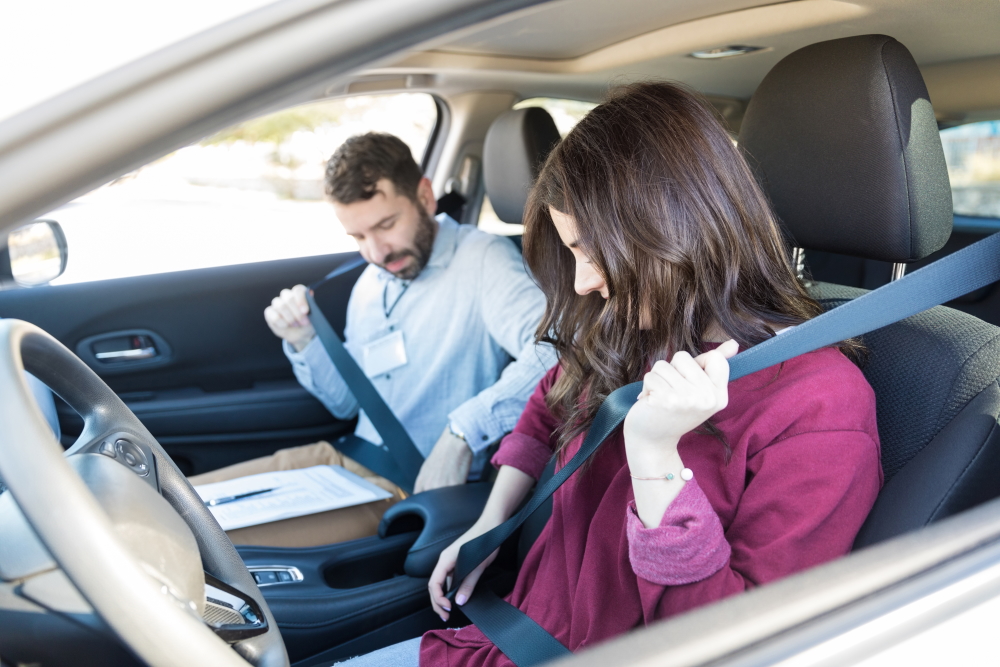![]() I remember when everyone knew a family that had been adversely affected by the loss or serious injury of a loved one in a motor vehicle accident. Initially, there was much hand-wringing and little action about automobile safety. After seat-belt laws were enacted, people railed against them as government interference, spreading fearful predictions that people would be trapped inside their cars. Then, something amazing happened: Seat belts worked. Fewer people died, and a disproportionate number of those who did die were not strapped in.
I remember when everyone knew a family that had been adversely affected by the loss or serious injury of a loved one in a motor vehicle accident. Initially, there was much hand-wringing and little action about automobile safety. After seat-belt laws were enacted, people railed against them as government interference, spreading fearful predictions that people would be trapped inside their cars. Then, something amazing happened: Seat belts worked. Fewer people died, and a disproportionate number of those who did die were not strapped in.
Automobile manufacturers were not fans of improved safety measures for cars. They both feared the negative public relations of the dangers of automotive travel and claimed that people would not be willing to pay extra for safety measures. Still, technology advanced and over the course of 60 years, more safety measures were added.
With each incremental advance, more lives were saved, and people willingly paid extra for safety measures. Roads were also made safer with better banking and curbing, more visible markings and signage and better lighting. Mothers Against Drunk Drivers was formed, and laws against driving while intoxicated became tougher.
Since the late 1960s the number of motor vehicle deaths per 100,000 people in the U.S. has steadily dropped.
Flash forward to today. Death by gun violence has surpassed motor vehicle deaths nationwide, and mass shootings are an everyday occurrence. There has been much hand wringing and little action. Promising safety technology like matching fingerprints to guns is available, although not perfected — neither were seat belts and air bags when they were introduced.
Smaller changes we can adopt
ShotSpotter technology is available to alert police when and where gunfire is occurring, but only about 100 cities have adopted this technology. Safe firearm storage practices have been proven to reduce the danger of injury or death, especially in cases of suicide, but are slow to be adopted by gun owners or enforced by law. Training standards for concealed-carry permit holders vary widely from state to state from rigorous to nonexistent. Fifteen states do not require any permit to carry a concealed weapon.
 The gun industry does not want to admit that their product is dangerous or to incur the cost of improving the safety of their devices. In the last 40 years, the National Rifle Association has turned from a safety and sportsmanship organization to one that uses fear as a driving force to sell guns, no matter how that affects the overall safety of our society.
The gun industry does not want to admit that their product is dangerous or to incur the cost of improving the safety of their devices. In the last 40 years, the National Rifle Association has turned from a safety and sportsmanship organization to one that uses fear as a driving force to sell guns, no matter how that affects the overall safety of our society.
We should learn from the historical development of auto safety and enact legislation and adopt policies that are designed to reduce gun violence. In many states, promising laws like universal background checks and extreme risk protective orders (ERPOs) have proven track records for saving lives.
Permit to purchase laws put local law enforcement in charge of issuing a permit to buy a gun. Who better than they know who should and shouldn’t have a gun? All these laws have been shown to be effective, yet the gun lobby and its advocates automatically oppose every proposed gun law that has the potential to save lives.
There are many incremental changes that we can make to ensure better safety from gun violence: closing the gun-show loophole, adopting ERPOs to protect abused partners and spouses and those with suicidal tendencies, holding gun manufacturers to rigid safety standards, banning assault-type weapons or regulating them like machine guns, limiting magazine size and enacting safe-storage laws to protect children.
On the last point, there is evidence that fewer Americans are choosing to own a firearm. Why? Perhaps they understand that you are actually not safer with a gun in your home. In fact, studies show that a gun is much more likely to be used in a suicide, domestic violence homicide or unintentional shooting or to be stolen and used in a crime than it is to be successfully used in self-defense.
Is it true that no single law or action will solve the problem of gun violence? Yes. Is it also true that we should start somewhere? Yes. History has shown that the American people value the safety of their loved ones and are willing to make societal changes in the name of public safety. There is no reason to wait 60 years to enact better gun laws and save lives. Let’s do it now!
Nancy Farrar Halden has served as president of the board of the Gun Violence Prevention Center of Utah, an affiliate of States United to Prevent Gun Violence. Peace is my passion, and our current relationship in the U.S. with guns has eroded our peaceful society.

Your analogy is poor and you don’t seem very knowledgeable of the subject. I found a concise rebuttal of your article here:
https://bearingarms.com/came/2020/10/14/incremental-change-2a-rights/